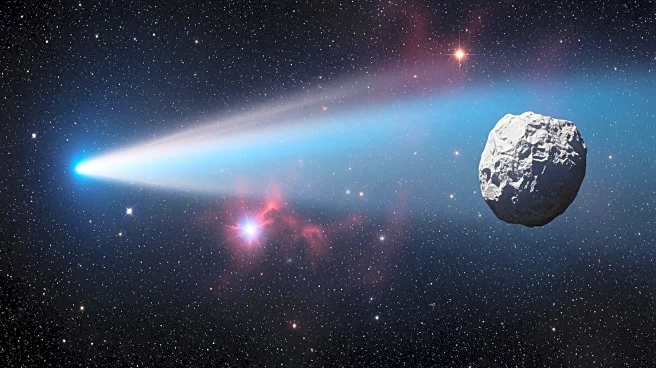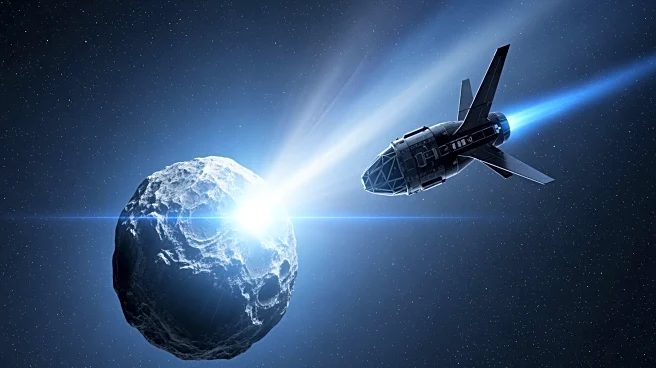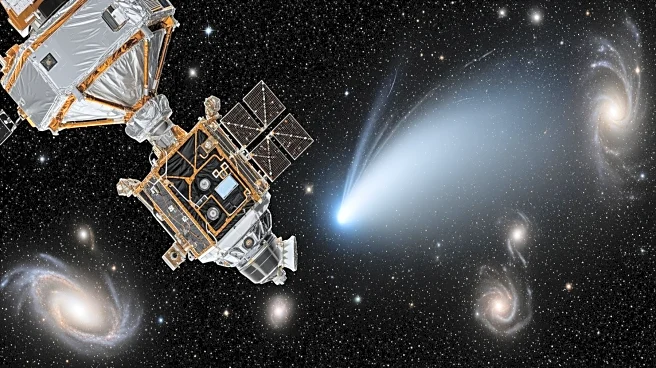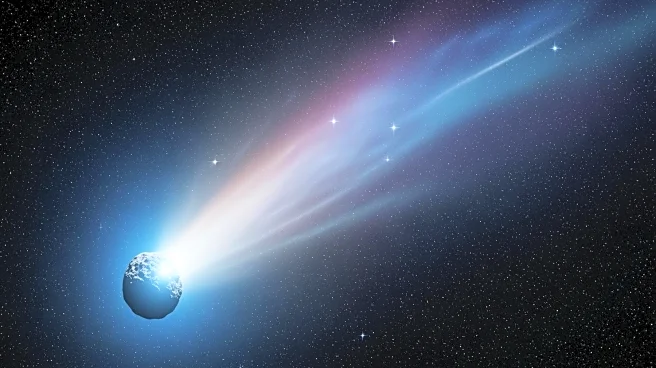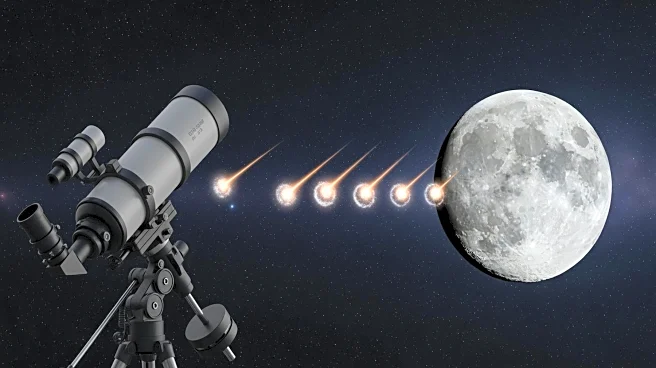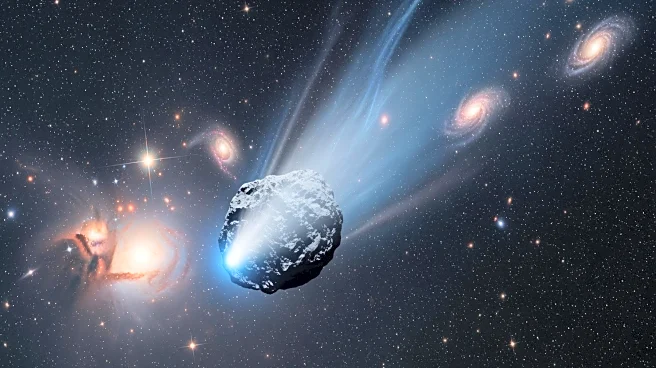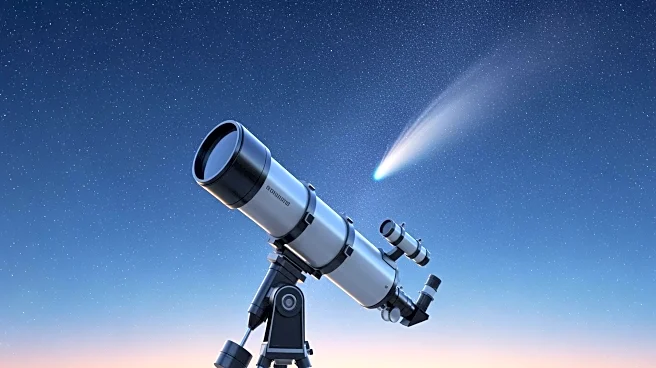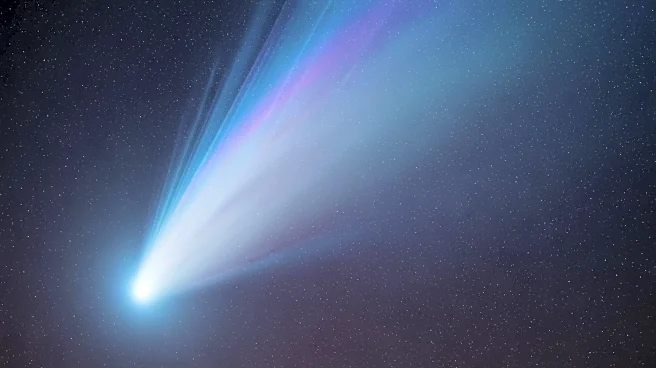What's Happening?
NASA's Hubble Space Telescope has captured images of the comet 3I/ATLAS, a rare interstellar visitor that recently became visible from Earth after reaching its closest point to the sun, known as perihelion,
on October 29. The comet, which is only the third interstellar visitor ever recorded, is believed to be around 3 billion years older than the solar system. Observations made by Qicheng Zhang at the Lowell Observatory in Arizona reveal the comet glowing green due to diatomic carbon particles. The comet's atmosphere, or coma, becomes brighter as it approaches the sun, sublimating ice and other materials into gases. Despite appearing to lack a dust tail, the comet's tail is present but viewed head-on, making it less visible. The comet's irradiated crust, formed by prolonged exposure to space radiation, may complicate efforts to determine its origins.
Why It's Important?
The observation of comet 3I/ATLAS is significant for astronomers and scientists as it provides a unique opportunity to study an interstellar object that predates the solar system. Understanding the composition and behavior of such comets can offer insights into the early conditions of the universe and the formation of star systems. The comet's irradiated crust poses challenges for researchers attempting to analyze its original materials, potentially impacting theories about interstellar travel and the nature of celestial bodies. The findings could influence future research and exploration strategies, as well as enhance our understanding of cosmic phenomena.
What's Next?
As comet 3I/ATLAS continues its journey away from the sun, astronomers are expected to conduct further observations using large telescopes now able to view the comet above the horizon. These observations may lead to new discoveries about the comet's composition and behavior. The scientific community anticipates a surge in research findings in the coming months, which could contribute to broader astronomical knowledge and potentially inform future space missions targeting interstellar objects.
Beyond the Headlines
The study of comet 3I/ATLAS also raises questions about the ethical and practical implications of interstellar exploration. As scientists strive to understand the origins and characteristics of such ancient objects, discussions may emerge regarding the preservation of cosmic heritage and the potential for future human interaction with interstellar bodies. The comet's journey and the data collected could inspire new cultural narratives and scientific endeavors focused on the mysteries of the universe.
